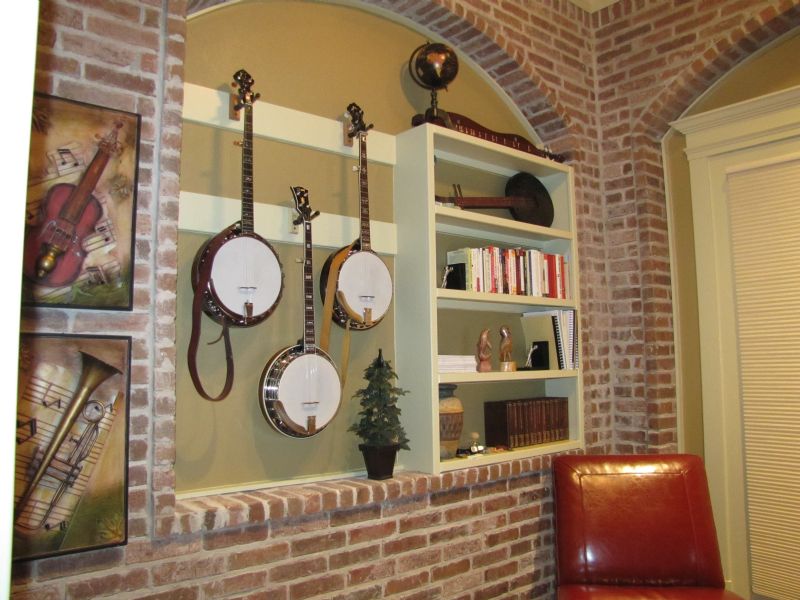When it comes to displaying a musical instrument like a banjo, there are a number of options available. One popular method is to hang the banjo on a wall, either by using a wall hanger or by simply resting the instrument on a hook. However, when it comes to hanging a banjo, there is some debate over whether it is safe or not to hang the instrument by the neck. In this article, we’ll explore the pros and cons of hanging a banjo by the neck, so you can make an informed decision on how to best display your instrument.

Pros of Hanging a Banjo by the Neck
One of the main advantages of hanging a banjo by the neck is that it can be an attractive way to display the instrument. The distinctive shape of a banjo, with its long neck and circular body, can make it a visually striking addition to a room, and hanging the instrument on a wall can be a great way to show it off. By hanging a banjo by the neck, you can also create a space-saving display that frees up valuable floor space.
Another potential advantage of hanging a banjo by the neck is that it can make the instrument more accessible. If you’re a musician who regularly plays the banjo, having the instrument hanging on the wall can make it easier to grab and start playing whenever inspiration strikes. Additionally, if you’re short on storage space, hanging your banjo by the neck can be a convenient way to keep the instrument close at hand.
Cons of Hanging a Banjo by the Neck
While hanging a banjo by the neck may seem like a convenient and attractive display option, there are also some potential drawbacks to consider. One of the main concerns is that hanging the banjo by the neck can put stress on the instrument, which can lead to damage over time. The weight of the banjo’s body can put pressure on the tuning pegs and strings, potentially causing tuning and intonation issues or even string breakage. Additionally, the pressure placed on the neck joint can cause the neck to warp or even break, which can be a costly and time-consuming repair.
Another potential issue with hanging a banjo by the neck is that it may not be safe. If the banjo is not properly secured to the wall, there is a risk that it could fall and cause injury or damage to the instrument. Additionally, if the wall is not strong enough to support the weight of the banjo, it could cause damage to the wall itself.
Alternatives to Hanging a Banjo by the Neck
If you’re concerned about the potential risks of hanging your banjo by the neck, there are a number of alternatives available. One option is to use a specially-designed banjo stand, which can support the weight of the instrument and keep it securely in place. Another option is to use a wall hanger that is specifically designed to support the weight of a banjo. These hangers typically attach to the wall with screws and are designed to distribute the weight of the instrument evenly.
Finally, if you’re looking for a space-saving display option, you might consider using a banjo case that is designed to be mounted on the wall. These cases typically feature a transparent front panel that allows you to see the instrument while keeping it protected from dust and other hazards.
In conclusion, while hanging a banjo by the neck can be an attractive and convenient display option, it is important to consider the potential risks to the instrument. By using a specially-designed stand or wall hanger, you can safely display your banjo while minimizing the risk of damage. Ultimately, the decision of how to display your banjo will depend on your personal preferences and the specific needs of your space.
Play along with your favorite songs with our Free Banjo Tabs resource.
More Banjo Articles
What happened to the young banjo player boy from the movie Deliverance?
What is the best free banjo app for beginners?
